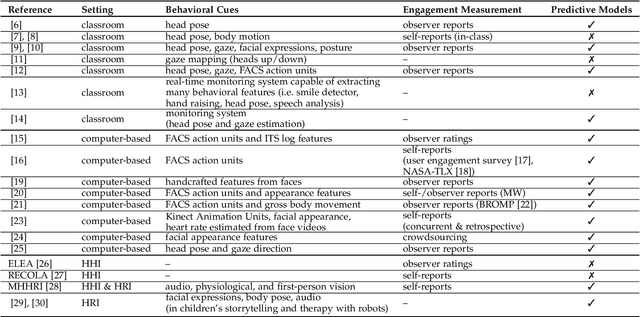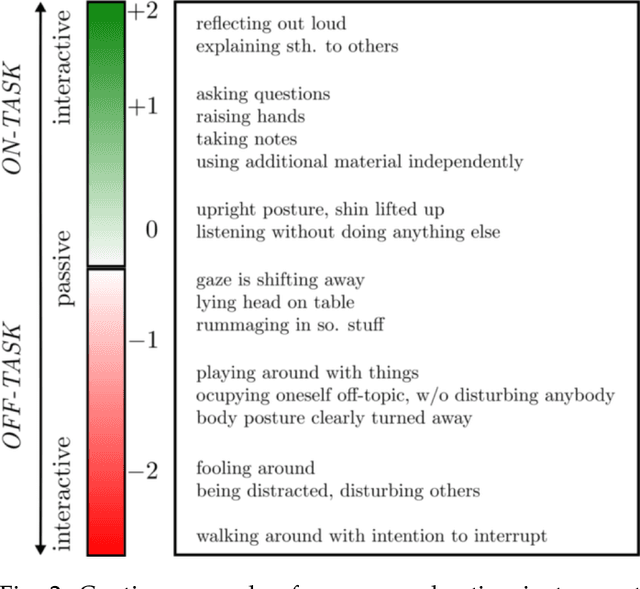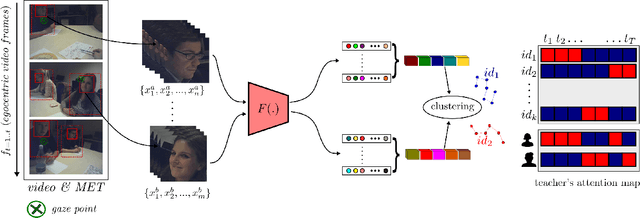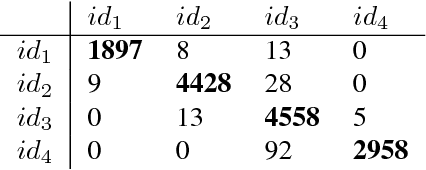Patricia Goldberg
Multimodal Engagement Analysis from Facial Videos in the Classroom
Jan 22, 2021



Abstract:Student engagement is a key construct for learning and teaching. While most of the literature explored the student engagement analysis on computer-based settings, this paper extends that focus to classroom instruction. To best examine student visual engagement in the classroom, we conducted a study utilizing the audiovisual recordings of classes at a secondary school over one and a half month's time, acquired continuous engagement labeling per student (N=15) in repeated sessions, and explored computer vision methods to classify engagement levels from faces in the classroom. We trained deep embeddings for attentional and emotional features, training Attention-Net for head pose estimation and Affect-Net for facial expression recognition. We additionally trained different engagement classifiers, consisting of Support Vector Machines, Random Forest, Multilayer Perceptron, and Long Short-Term Memory, for both features. The best performing engagement classifiers achieved AUCs of .620 and .720 in Grades 8 and 12, respectively. We further investigated fusion strategies and found score-level fusion either improves the engagement classifiers or is on par with the best performing modality. We also investigated the effect of personalization and found that using only 60-seconds of person-specific data selected by margin uncertainty of the base classifier yielded an average AUC improvement of .084. 4.Our main aim with this work is to provide the technical means to facilitate the manual data analysis of classroom videos in research on teaching quality and in the context of teacher training.
Teacher's Perception in the Classroom
May 22, 2018



Abstract:The ability for a teacher to engage all students in active learning processes in classroom constitutes a crucial prerequisite for enhancing students achievement. Teachers' attentional processes provide important insights into teachers' ability to focus their attention on relevant information in the complexity of classroom interaction and distribute their attention across students in order to recognize the relevant needs for learning. In this context, mobile eye tracking is an innovative approach within teaching effectiveness research to capture teachers' attentional processes while teaching. However, analyzing mobile eye-tracking data by hand is time consuming and still limited. In this paper, we introduce a new approach to enhance the impact of mobile eye tracking by connecting it with computer vision. In mobile eye tracking videos from an educational study using a standardized small group situation, we apply a state-ofthe-art face detector, create face tracklets, and introduce a novel method to cluster faces into the number of identity. Subsequently, teachers' attentional focus is calculated per student during a teaching unit by associating eye tracking fixations and face tracklets. To the best of our knowledge, this is the first work to combine computer vision and mobile eye tracking to model teachers' attention while instructing.
 Add to Chrome
Add to Chrome Add to Firefox
Add to Firefox Add to Edge
Add to Edge